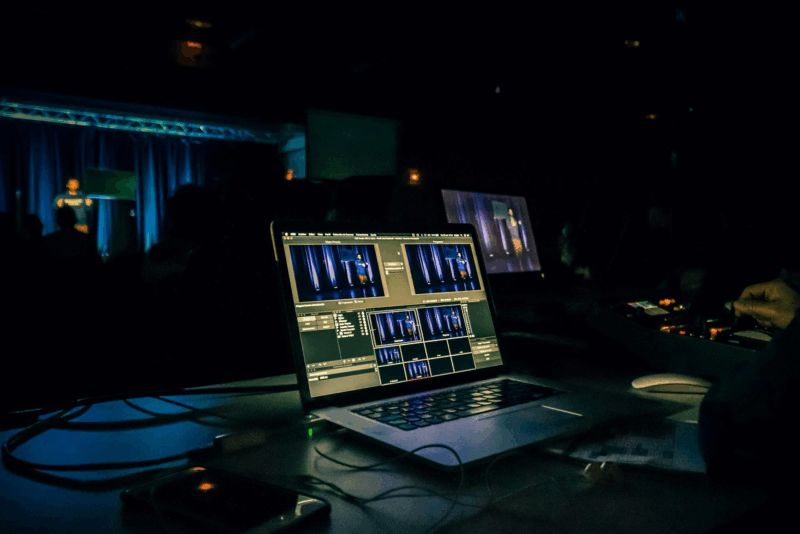
Imagine a world where printing isn’t just about paper and ink but involves creating tangible objects at your desk. Sounds like science fiction? Well, it’s not. The future of printing is here, and it’s transforming the way we think about production.
In this text, I’ll take you on a journey into the exciting area of printer technology. We’ll explore how advancements in 3D printing are revolutionizing industries from manufacturing to healthcare and even food production! So buckle up for an enlightening ride into tomorrow’s tech today.
Advancements in Printing Technologies
As we investigate the future of printing further, let’s focus on key advancements. These developments are revolutionizing the way we print and shaping our interaction with printed materials.
Enhanced Print Quality
One significant leap in printer technology lies in improved print quality. Traditional printers often struggled to produce high-resolution images and fine details. Today, thanks to advances like high-definition imaging (HDI), printers can now deliver crystal-clear images that were once impossible. For instance, a modern desktop printer can effortlessly generate vivid color photos with sharp detail and smooth gradients.
Increased Print Speed
Time is money, as they say, even for printing tasks. Printer speed was once a bottleneck for businesses relying heavily on printed documents or graphics. However, recent technological breakthroughs have led to drastic improvements in print speed. Modern printers don’t just spit out pages faster; they’re designed to handle complex tasks efficiently without compromising quality.
Multi-Material Capabilities
The introduction of 3D printing brought about a game-changer: multi-material capabilities. This advancement allows objects made from multiple materials simultaneously, extending far beyond paper and ink! With such features, 3D printers can create products combining different properties – hard and soft parts or various colors – all within one print job.
Integration with AI and Machine Learning
As we venture further into the future of printing technology, two key players emerge – Artificial Intelligence (AI) and Machine Learning. These technologies are set to revolutionize printing as we know it.
Predictive Maintenance
Imagine a scenario where your desktop printer can self-diagnose an impending malfunction before it happens. This isn’t a scene from a sci-fi movie; it’s the reality of AI-powered predictive maintenance. Harnessing machine learning algorithms, printers analyze historical data to predict potential issues. For example, irregularities in print quality might indicate wear in certain parts. Repairs can be scheduled proactively by identifying these signs early, preventing unexpected downtime and improving overall efficiency. However, if you encounter a problem with your prints, like faded colors or missing text, it’s essential to know how to fix a dry ink cartridge to ensure your printer continues to perform at its best.
Automated Calibration
Remember the days when calibrating your printer was a manual task? Those days are fading fast, thanks to automated calibration systems that leverage AI. With machine learning models at their core, these systems adjust print settings dynamically based on real-time feedback.
Say goodbye to subpar prints due to misalignment or incorrect color balance; automated calibration ensures optimal print quality every time without human intervention.
Sustainable and Eco-Friendly Solutions
Having delved into the futuristic world of printing technology, let’s shift gears to an equally important aspect: sustainability. The future of printing is not just about advanced tech; it’s also about finding eco-friendly solutions that reduce our environmental footprint.
Recycled and Biodegradable Materials
In my own experience with a desktop printer, I found that using recycled paper makes a tremendous difference in reducing waste. Today, many manufacturers are taking this concept further by developing printers that use recycled or biodegradable materials for their components.
Energy-Efficient Designs
Another key area of focus is energy efficiency. From personal experience, leaving your printer on standby all day can significantly increase your electricity bill! But fear not; innovations are underway to tackle this issue. Here are two examples:
- Many modern printers now have automatic sleep mode features, drastically reducing idle power consumption.
- Companies are designing print machines with low-energy LED lights instead of traditional fluorescents.
Such initiatives align perfectly with our goal of ‘smarter’ printing, which involves saving energy and costs while maintaining high-quality output.
Bambu Lab’s Commitment to the Printing Industry
Continuing the issue of printing technology and its environmental impact, Bambu Lab provides a good example. Since its founding in the desktop 3D printer market, this consumer tech company has prioritized technological innovation and environmental sustainability.
Modern X1 series printers from Bambu Lab foster innovation by combining digital and physical realities. Their three operational sites are in Shenzhen, Shanghai, and Austin, Texas—a sign of their global dedication.
Bambu Lab combines 3D printing enthusiasts with engineers from robotics, AI, materials science, and the internet. Their expertise supports high-tech items that improve the planet.
They’re committed to minimizing the 3D printing industry’s carbon footprints and making cutting-edge technology affordable. They’re promoting sustainability by designing next-generation eco-friendly 3D printers.
Their efforts were noticed. The P1S model was named “Best 3D Printer for 2023,” citing its improvements over the P1P model. These awards validate their creative approach to improving user experience while maintaining simplicity and ease of use.
Future Trends in 3D Printing
Taking a peek into the future of 3D printing, we see that three trends dominate the horizon. These include remote and cloud printing, expanded applications, and personalized manufacturing.
Remote and Cloud Printing
In my experience with Bambu Lab’s X1 series printers, I’ve seen how they’re pushing boundaries by offering remote control via smartphone apps. This trend is set to expand as more desktop printers become IoT-enabled devices.

Integrating cloud-based platforms for storage, management, and sharing of designs further supports this shift. It simplifies the process while providing flexibility to print from anywhere, at any time.
Expanded Applications
From prosthetics to construction components – there’s hardly an area untouched by 3D printing today. But wait till you see what’s coming next! Researchers are exploring bioprinting – creating organic tissues with 3D printers. Yes, you heard it right! Another fascinating trend is ‘4D printing’, where printed objects can transform over time or under certain conditions (like temperature or humidity). These advancements promise a wider range of applications across industries that we can’t even fathom yet!
Personalized Manufacturing
Remember when I mentioned Bambu Lab’s P1S model? It’s not just about eco-friendly printing; it also democratizes production by bringing manufacturing capabilities home. In other words, anyone with a desktop printer can create customized products on demand. As technology improves and prices drop, personalized manufacturing will become commonplace in households worldwide.
Conclusion
The future of printing is here, and it’s more exciting than ever! With advancements like high-definition imaging, multi-material capabilities, and integration with AI, printing technology is revolutionizing industries from manufacturing to healthcare. Imagine your printer predicting maintenance needs or creating objects with multiple materials in one go! Companies like Bambu Lab are at the forefront, blending innovation with eco-friendly practices. As we look ahead, trends like remote printing, expanded applications, and personalized manufacturing promise to make the future of printing even brighter. Get ready for a thrilling ride into tomorrow’s tech today!











